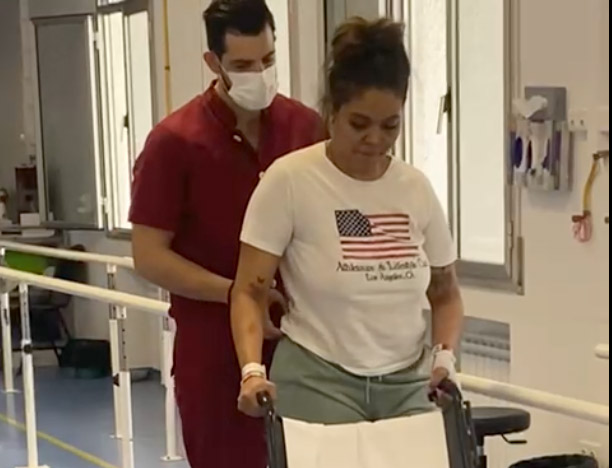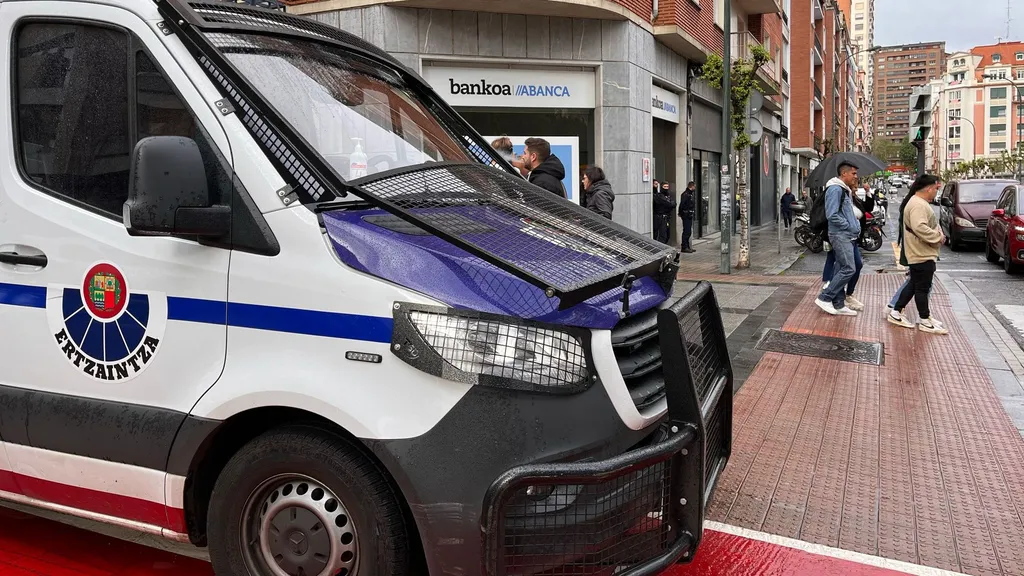Security problems in Basque Country?
- Security is fashionable, security sells: At CAPV in 2020, household alarms increased by 40%. Talking about security and, above all, insecurity gives hope: EH Bildu now also talks about “public order” and the “police model”, and has achieved very good electoral results, despite the fact that social protection against independence is the slightest ever. Security issues have a broad audience: In El Diario Vasco, in the last three years alone, almost 40,000 entries can be found if we look for the word “security”. But do we live in such a dangerous country? And more importantly, how do we measure “safety”? Depending on what phenomena do we understand if a society is safe or not? We have collected some points to reflect on the subject.
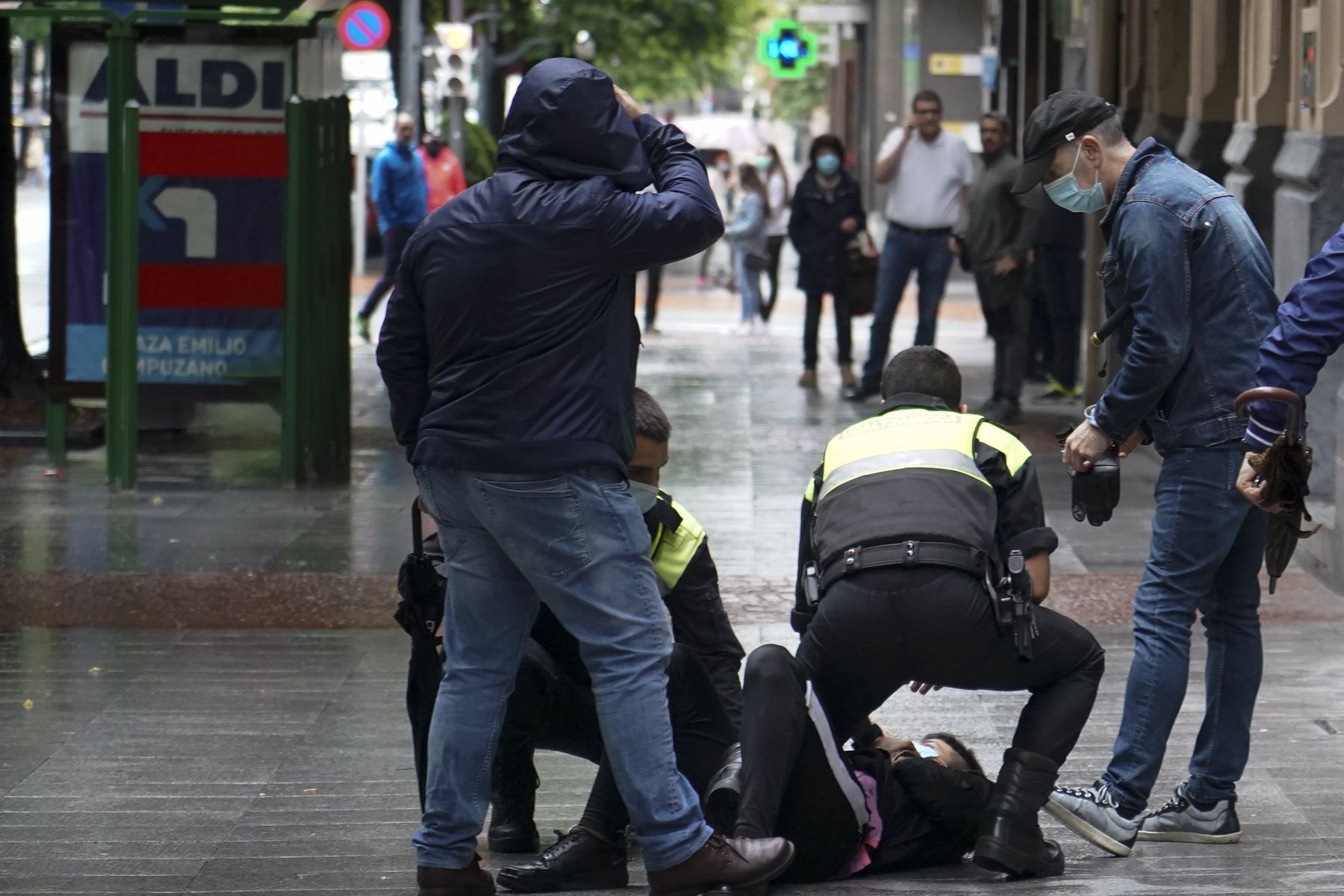
When talking about insecurity, it is usually associated with crimes against private property and people, often by the use of violence: murder, kidnapping, theft, aggression, rape, etc. The incidence data for these phenomena calculate indicators such as the International Crime Index, by country.
For example, the United States (EE.UU.) recorded in 2020 7.8 homicides per 100,000 inhabitants, starting at 21,000. They were the highest figures since 1995, but not the highest in history. In the early 1980s, there were 10 murders per 100,000 inhabitants. Firearms deaths in 2020 were 6.1 per 100,000 inhabitants. Well, the overall homicide rate (not firearms) of the Spanish State in 2021 was 0.61 per 100,000 inhabitants. And within it, the four territories of Hego Euskal Herria recorded one of the lowest rates. According to the Ministry of the Interior, in the CAPV there were 0.51 murders per 100,000 inhabitants and 0.30 in Navarra. To give an idea, in the Basque Country there were 14 murders in 2022, among just over 2,190,000 inhabitants. This means that if the Basque Country had the same murder rate as the United States, more than 160 people would be victims of painful homicides or killings a year.
As we have seen, Americans live with about six firearms deaths per 100,000 people a year. Can we imagine that in Donostia it would be almost a dozen deaths by annual shootings and about 20 in the case of Bilbao? Add all shootings without death. To give you an idea, only with 38,550 people injured last year by firearms in the United States can you calculate a rate of 11.39 per 100,000 inhabitants. By carrying this rate, nearly 21 people in Donostia would be shot to death each year. Then there would be all the shootings without any injuries.
More than one might think that when we compare with the United States, we've chosen an extreme case, but it doesn't. It is also possible to present figures much more terrifying than those in the United States. In Mexico, 28.37 homicides per 100,000 inhabitants were recorded in 2021, 33.46 in Nigeria and 36.69 in Venezuela. In fact, it is appreciated that the first two years of office of President Andrés López Obrador have been the most violent in contemporary Mexican history: Between 2018 and 2019, nearly 70,000 people were killed. This is much higher than the number of American soldiers killed in Vietnam between 1964 and 1975.
Continuing with violent deaths, Euskal Herria is also above the best data in the world: homicide rates are much lower in Canada (1.97), Finland (1.64), Belgium (1.69), France (1.35), Sweden (1.23), Denmark (0.95) and Ireland (0.69). Consequently, Euskal Herria is one of the most reassuring places in the world regarding homicides.

Something similar shows the Global Peace Index. This indicator measures the risk in more general terms for “domestic conflict, war and the level of violence”. According to the 2022 Global Peace Index report, the Spanish state ranks 29 among the 163 safest countries, and let us remember that the territories of Hego Euskal Herria are always one of the quietest in the Spanish state in all areas of crime and violence.
Regarding embargoes, in the CAPV there were seven in 2021, 0.3 per 100,000 inhabitants. In Mexico, at least 1,020 people were kidnapped that same year, 0.8 kidnappings per 100,000 inhabitants. If the CAV had the same kidnapping rate as Mexico, every year there would be about seventeen kidnappings. And this wasn't one of Mexico's worst years. In Mexico, an average of 115 kidnappings occur per month in 27 weeks and 4 days. According to a very minority estimate by the United Nations, between 1964 and 2022, at least 100,000 people have been eliminated, 97 per cent of whom are only counted from 2006. Only these 100,000 people would account for 3 per cent of the current population of the Basque Country.
Comparison of minor crimes In
Hego Euskal Herria the incidence of the most serious crimes is lower than in other countries, both in absolute and relative terms. But what do the figures for milder crimes say? Let's look at the incidence of crimes without violence against people.
In Spain, almost 600 burglaries per 100,000 inhabitants were counted in 2013 and 222 in 2021. That is, in eight years, it dropped by a third. In fact, compared to European data from 2019, which are not entirely significant by the pandemic in 2020, the Spanish State has been considered to have a “privileged position” in terms of the number of home burglaries per 100,000 inhabitants. With 209 cases per 100,000 inhabitants, it is much better than Italy (407), the Netherlands (434), Belgium (515), France (551), the United Kingdom (631), Denmark (643) or Sweden (732). Only Austria (99), Germany (105), Finland (158), Portugal (208) and Norway (249) improve the Spanish State rate. Experts have even stressed that the incidence of burglaries in homes in the Spanish State is “rare” according to a study published in 2020 by the Union’s Agency for Fundamental Rights (FRA), such a tourist country batentzat.Europar, the Spanish State ranked 21 among the 27 EU countries with the most burglaries in homes. However, he was the second country most concerned about the theft and the most insecure.
Taking as a reference the figures of the Spanish State and being relatively low compared to the international ones, those of Hego Euskal Herria are even lower in this area. According to the Securitas Direct Barometer, the intrusions detected in homes and businesses were 1.4% in the CAPV and 1.3% in Navarra. For the purposes of inclusion in the State perspective, only territories with lower population density have lower rates. Catalonia and Andalusia are about 1.9%. Moreover, when they say “force burglaries” they refer to the rupture of locks and other methods of penetration in buildings, not to violence against people.
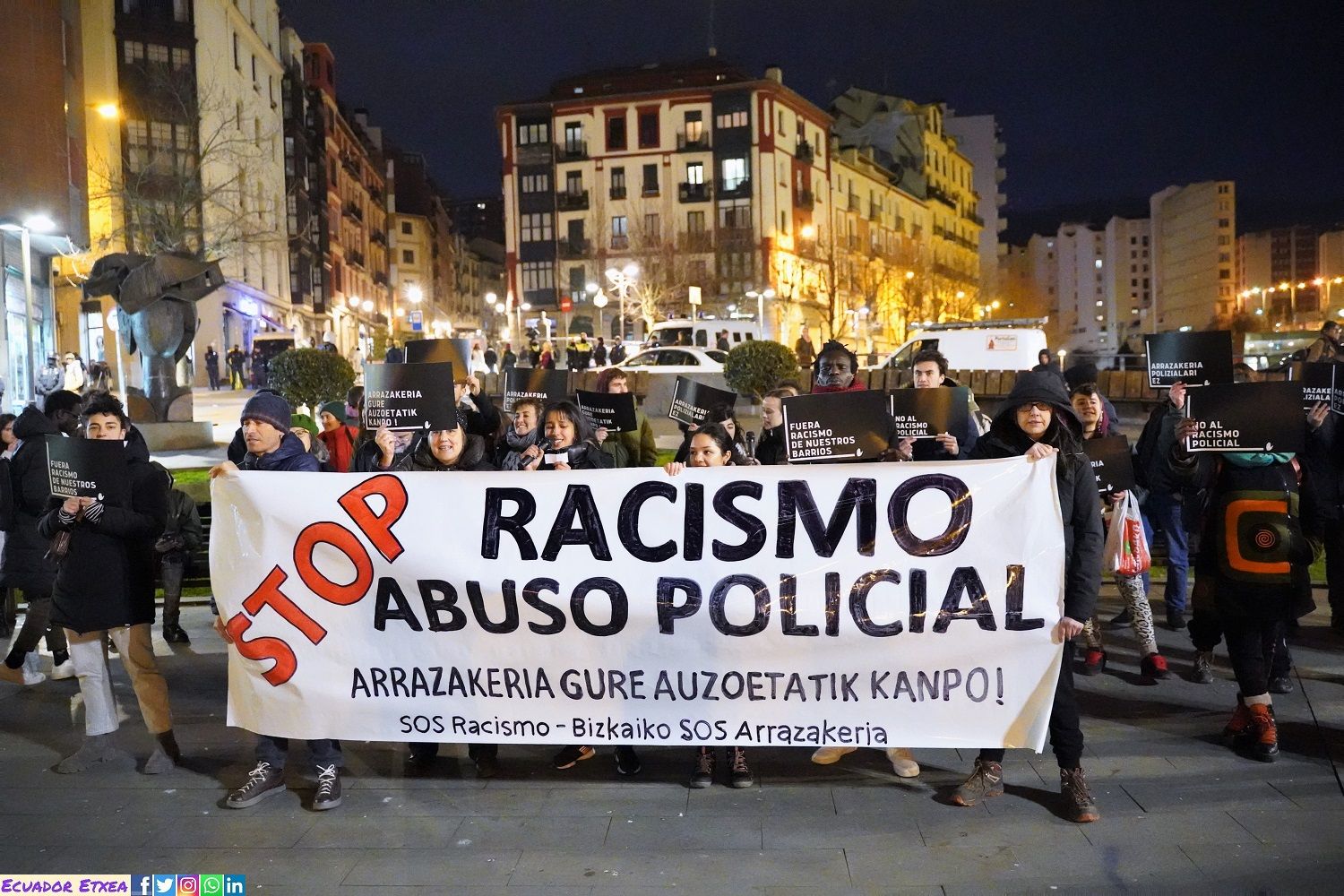
On the other hand, in 2022, the CAPV recorded 58,346 burglaries under 400 euros, that is, 333 cases per 100,000 inhabitants, in case of robbery without any form of force. According to data from the Spanish Ministry of the Interior, in 2021, 1,040 small burglaries per 100,000 inhabitants were counted. It should be remembered that the Spanish State does not have the highest figures in the European Union in this area either: In Sweden, 3,011,22 minor robberies per 100,000 inhabitants were detected in the exceptional year 2020. In Denmark there were 2,439.43, in Finland 2.440.25, in the Netherlands 1.175.09. One might think that in a normal situation they are much more, and if you look at figures outside the European Union they are even higher.
What about drug trafficking? In the CAPV in 2021, 1,372 drug trafficking offences were detected, i.e. 62 cases per 100,000 inhabitants. In Navarra there were 374 cases, 56.7 cases per 100,000 inhabitants. In Germany in 2020, due to exceptional circumstances, there were 439.78, 667.11 in Finland, 536.19 in Denmark and 447.97 in Ireland. If you want to see more frightening figures, you just have to look at South America or the United States.
In short, taking in hand most of the indicators used at the international level to measure this problematic concept of safety, we come to the same conclusion if we are talking about burglaries, shootings, kidnappings or knives in one of the most tranquil places in the world.
Insatiable fear As
we have seen, crime rates are low in our environment, but not security demand. According to the then INE Survey on Living Conditions, 21% of the Spanish population felt “a little or a lot of insecurity when walking in the street at night” in 2013. Moreover, despite the fact that the crime figures at the CAPV are much lower than those of the Spanish State, 5.7% of its population was in a situation of “great insecurity” when leaving the street at night, compared to 5.3% of the Spanish State average.
In Spain, in 2014, a survey on “citizen security” was conducted on more than 2,000 people aged between 30 and 65 years. 77% said that “the law against criminals must be tightened”. Similarly, six out of ten believed that “the number of police and equipment needed to be increased”. 32% thought it was a good solution to “install cameras” in public spaces.
But what is the police presence in the Spanish state? According to data from the Ministry of Territorial Policy of 2021, in the Spanish State there were 310 police officers per 100,000 inhabitants, only the Spanish Police and the Civil Guard counted. According to Eurostat, in 2019 the Spanish state was ranked twelfth in the EU, among the countries with the highest number of police officers per inhabitant. In Hego Euskal Herria the figures are totally disproportionate: In 2018, among all the State Security Forces, there were about 750 agents per 100,000 inhabitants. According to this, the Basque Country is the most police territory in Europe, which, following the armed action of ETA, reduced its units by 19%.
As has already been said, the picture of risks and safety is very subjective because people can have different views on safety conditions. But securitarian discourses have a problem. Phenomena that mention as “dangers” can be measured scientifically, so many moral fears can be refuted through figures. In the case of the occupation scandal, for example, if we admit that the occupation is “danger”, the figures are indisputable: In the Spanish state in 2022 there were 26 million homes, about 3.4 million vacancies. Convictions for usurpation-related crimes were only 4,000 in 2022.
All this suggests that if there is no large-scale “risk” in the social reality and in the data, the “insecurity” that is mentioned so much is situated in the minds of people, in our most irrational fears. Leveraging these emotions, securitarianism discourses take advantage of multiple strategies that make risk somewhat diffuse, invisible and confusing. In countries where the physical integrity and lives of people are not seriously or generally threatened, there is generally a great habit of frivolizing the terms “violence” and “risk”. In other words, where there are no serious security problems, they are invented. For example, the same typology of limits or dangers between violent and non-violent acts is distorted.
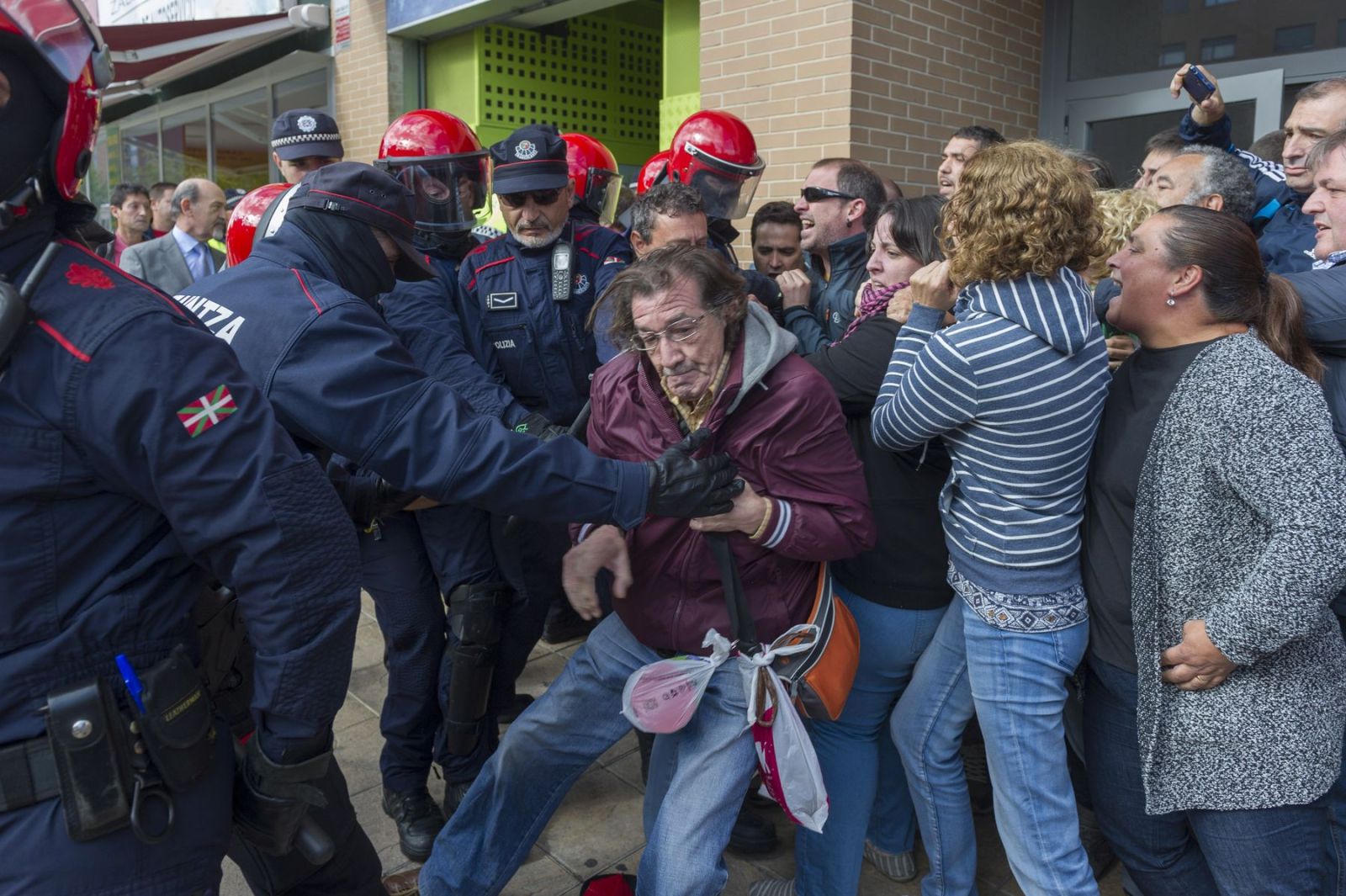
It's a good example of painting. Many people do not like the ones painted by certain connotations of order and morality. But it's one thing that he doesn't like painting, and it's very different than painting has violent acts. This discourse has concrete consequences: if we consider as violent the physical integrity of nobody and everyday actions that do not directly threaten life, we turn them into criminals, we think that there is a lot of violence in their environment and it will be easier to disturb. The dissemination of these opinions feeds fear and immerses society in situations of constant care and paranoia. “Security is addictive. There are never enough cameras,” says Jorge Dioni López in Spain of swimming pools.
A similar logic has been followed by the media campaign aimed at confusing the occupation with the violation of residence. But it seems that the situation is going to get worse, because from the hand of those who created “the okupas will enter your house as you go to buy bread” comes “the tenant” or “the unknown”. Reality has evidenced that occupation (either as usurpation or as a violation of the home) is not a widespread phenomenon, they are taking advantage of the remnants of social alarm about the occupation to take the word “okupa” demonized heavily and use it against the poor tenant. A poor family with difficulty paying rent is no longer that, but an unknown, a criminal, a problem that must be solved politically. Securitarianism establishes new frameworks of understanding in the face of a possible explosion of the rent crisis. From now on, each tenant is a power occupant.
Other trends Despite
the low crime rates, more than one can argue that in the last decade the number has increased, and in part it is true. But to what extent? What kind of crimes? Because the rise has not occurred in all typologies and in a homogeneous way: In the CAPV, for example, between 2012 and 2021, home robberies and drug trafficking have increased. Violent robberies have decreased considerably. But there are other kinds of crimes that have grown very rapidly and exponentially, and that hardly cause moral panic in society. We talk about racism, xenophobia, male violence and hatred against the LGTBIQ collective. Hate crimes recorded in the CAPV have increased from 277 to 435 between 2021 and 2022, an increase of 57% in just one year. 231 cases, 52.03 per cent of the total, correspond to all racist and xenophobic attacks. Secondly, there are aggressions against sexual orientation and identity, with 96 cases (21.62%). Another 68 are hate crimes related to the gender of aggression (15.32 per cent).
Euskal Herriko Bilgune Feministak deituta elkarretaratzea egin dute Hernanin Iratxe Sorzabali elkartasuna adierazi eta "babes osoa" emateko. Inkomunikatuta egon zen uneak berriz ere epailearen aurrean kontatu behar izatea, "bizi izandakoak utzitako ondorioen... [+]
Directa hedabidearen ikerketa batek ondorioztatu du 2018. eta 2020. urteen artean murgildu zela Kataluniako Palestinaren aldeko eta ezker independentistaren mugimenduetan, "Belén Hammad" izenaren pean. Nortasun agiri faltsu batekin Kataluniako Gobernuak... [+]
Euskal Herrian Euskarazen arabera, Tolosako tren geltokiko segurtasun agente batek eraso egin zion militante bati, agenteari euskaraz hitz egiteko eskatu ziolako. Tolosako alkateak "kezka" adierazi du eta azalpenak eskatuko dituela jakinarazi.
49 urte eta gero Espainiako Poliziak Gasteizko Maria Sortzez Garbiaren katedralean eraildako bost langileak oroitu dituzte beste behin astelehen arratsaldean. Milaka pertsona batu dira Zaramagatik abiatutako eta katedralean amaitutako manifestazioan. Manifestari guztiek ez dute... [+]
31 urteko emakume kolonbiarra osasun zentrora eraman ordez ertzain etxera eramatean agenteek "akatsa" egin zutela aitortu du Segurtasun sailburuak, baina azpimarratu du ez zuela "jipoirik" jaso.
Martxoaren 3ko Memoriala hornitzeko erabiliko dira bildutako objektuak. Ekimena ahalik eta jende gehienarengana iristeko asmoz, jardunaldiak antolatuko ditu Martxoak 3 elkarteak Gasteizko auzoetan.
Karen Daniela Ágredok dioenez, zortzi bat ordu eman zituen ziegako zoruan etzanda Ertzaintzak ospitalera eraman aurretik. Segurtasun sailburu Bingen Zupiriak berak eskatu du Eusko Legebiltzarrean agerraldia egitea.
Karen Daniela Ágredok dioenez, atxilotu zutenean berak ez zuen ertzainik zauritu, haiek lurrera bota zuten eta konortea galdu zuen. Ondoren, Ertzaintzaren komisariaren zoruan iratzartu zen eta handik ospitalera eraman zuten.
For almost a century, there has been no generation in the Basque Country that has not known torture. There are 5,379 people officially since 1960, but there are many more, because appearing publicly as tortured still hurts. And probably because nothing has changed at the base... [+]







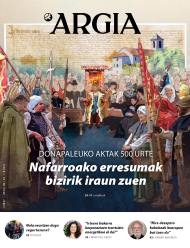



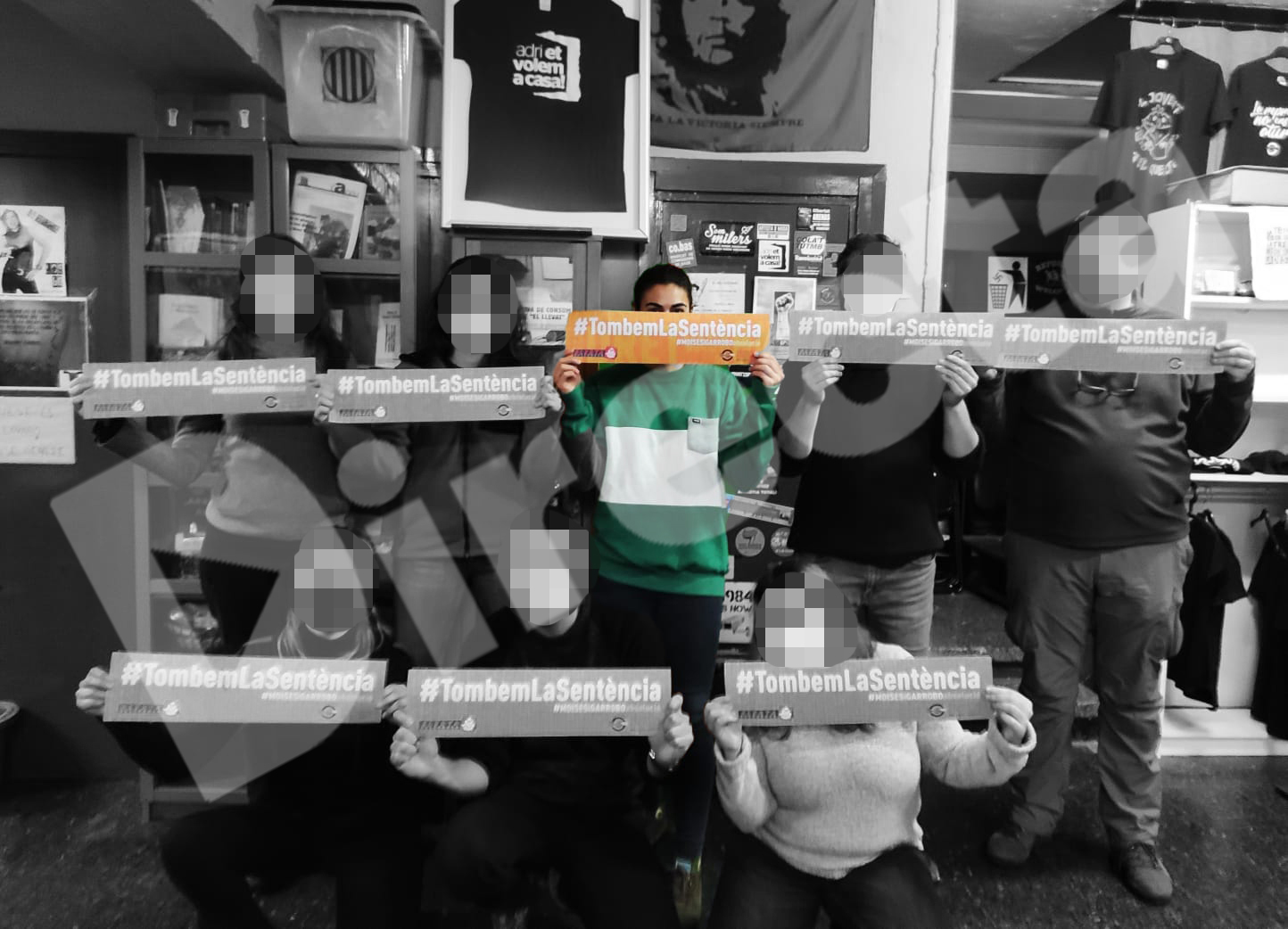
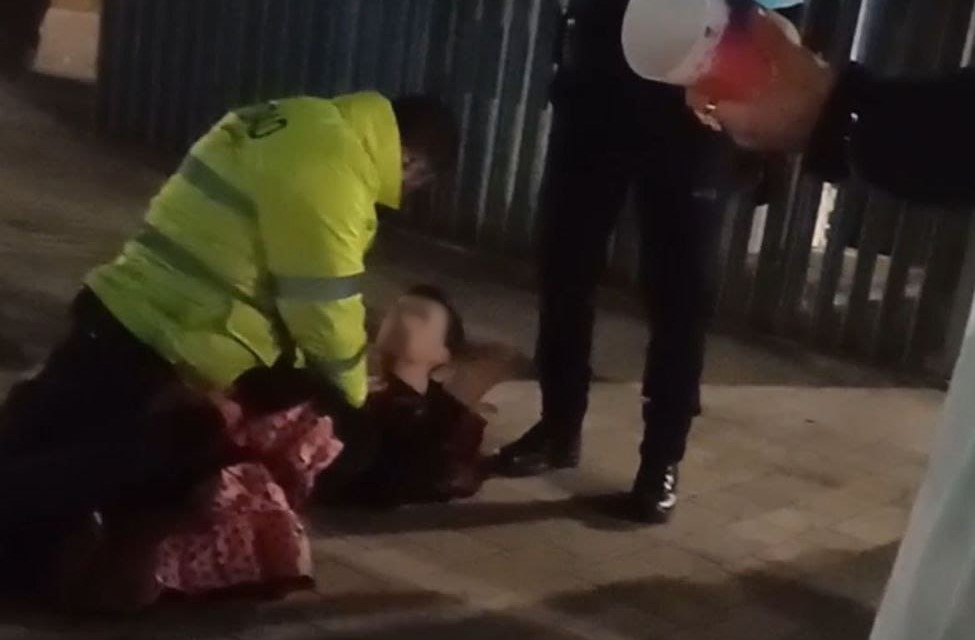
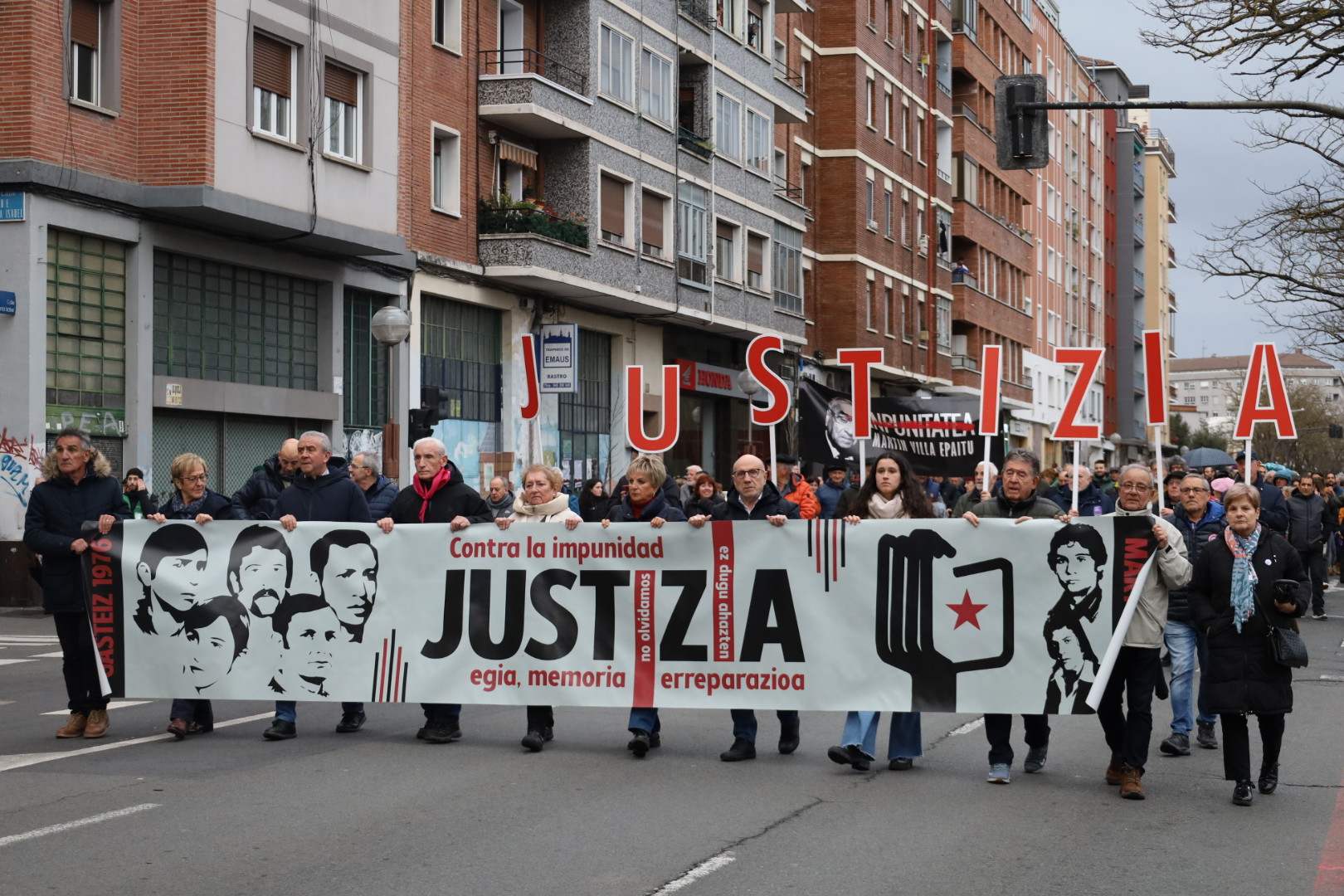
.jpg)
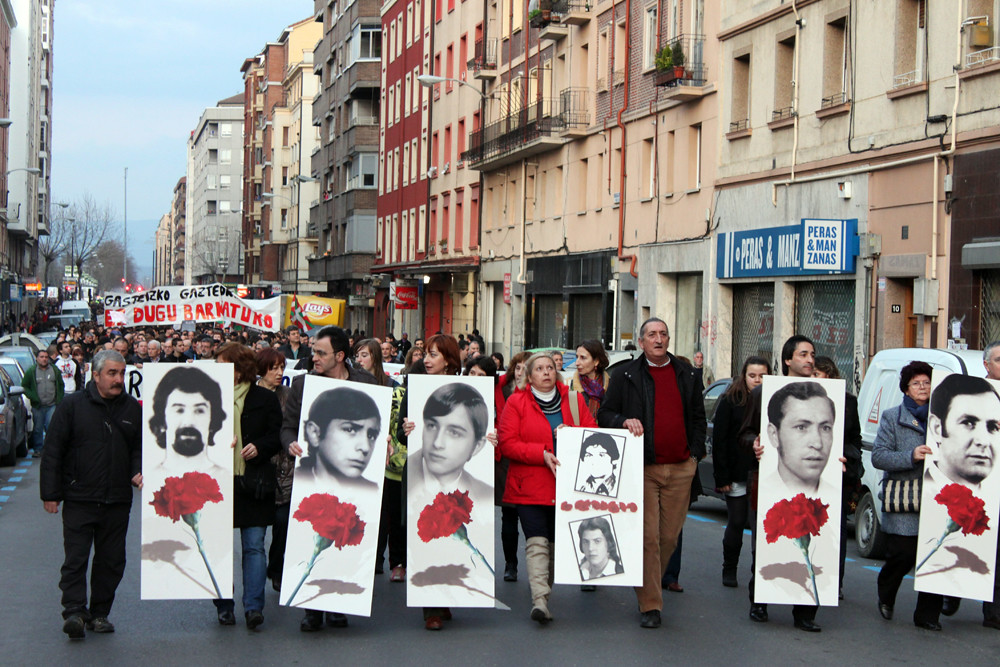
.jpg)


